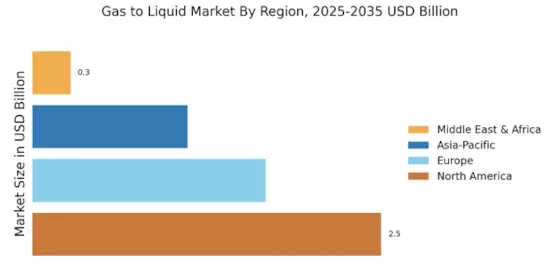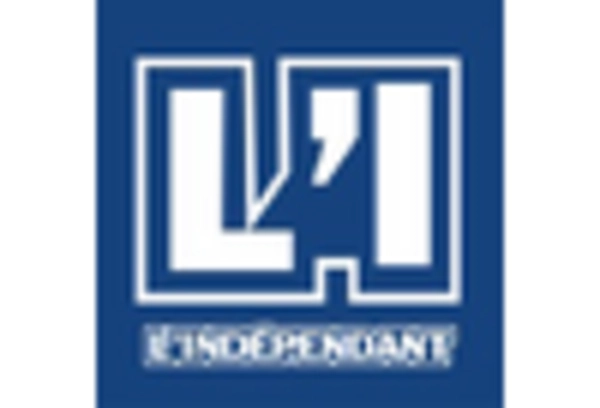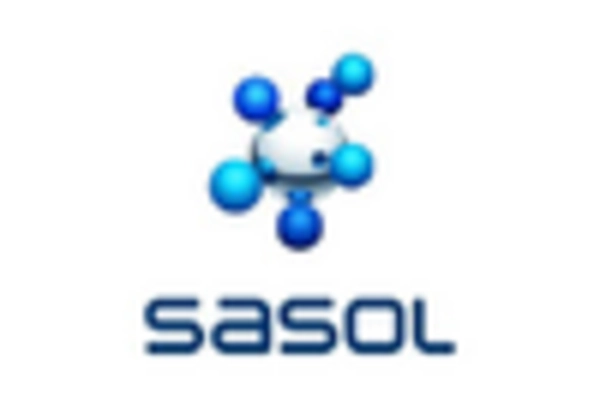Technological Innovations
Technological innovations play a crucial role in shaping the Gas to Liquid Market. Advances in catalytic processes and reactor designs have significantly improved the efficiency and cost-effectiveness of gas-to-liquid conversion. For instance, the development of new catalysts has reduced the energy requirements for the conversion process, thereby lowering operational costs. Furthermore, the integration of digital technologies, such as artificial intelligence and machine learning, is enhancing process optimization and predictive maintenance. These innovations are expected to drive the market forward, with estimates suggesting that the Gas to Liquid Market could witness a growth rate of around 6% annually as these technologies become more widely adopted.
Rising Demand for Clean Fuels
The increasing demand for clean fuels is a pivotal driver in the Gas to Liquid Market. As nations strive to reduce greenhouse gas emissions, the transition from traditional fossil fuels to cleaner alternatives becomes imperative. The Gas to Liquid technology offers a viable solution by converting natural gas into liquid fuels, which burn cleaner than conventional petroleum products. According to recent data, the demand for cleaner fuels is projected to grow at a compound annual growth rate of approximately 5% over the next decade. This shift not only aligns with environmental goals but also enhances energy security, making the Gas to Liquid Market an attractive sector for investment and innovation.
Growing Energy Security Concerns
Growing energy security concerns are driving interest in the Gas to Liquid Market. As geopolitical tensions and supply chain vulnerabilities become more pronounced, nations are seeking to diversify their energy sources. Gas-to-liquid technology provides a strategic advantage by enabling countries to convert locally available natural gas into liquid fuels, thereby reducing dependence on imported oil. This shift not only enhances energy independence but also stabilizes fuel prices. Analysts suggest that the Gas to Liquid Market could see a growth trajectory of approximately 5% as countries prioritize energy security and invest in domestic gas-to-liquid capabilities.
Supportive Regulatory Frameworks
Supportive regulatory frameworks are instrumental in fostering growth within the Gas to Liquid Market. Governments worldwide are implementing policies that encourage the adoption of cleaner technologies and fuels. Incentives such as tax breaks, subsidies, and research grants are being offered to companies investing in gas-to-liquid technologies. These regulations not only promote environmental sustainability but also stimulate economic growth by creating jobs in the energy sector. As regulatory bodies continue to prioritize clean energy initiatives, the Gas to Liquid Market is likely to benefit from increased investment and development opportunities, potentially leading to a market expansion of around 7% in the coming years.
Increasing Natural Gas Production
The surge in natural gas production is a vital driver for the Gas to Liquid Market. With advancements in extraction technologies, such as hydraulic fracturing and horizontal drilling, natural gas production has reached unprecedented levels. This abundance of natural gas provides a stable feedstock for gas-to-liquid processes, making it economically viable. Reports indicate that natural gas production is expected to increase by approximately 10% over the next five years, further bolstering the Gas to Liquid Market. As countries seek to utilize their natural gas reserves more effectively, the conversion to liquid fuels presents an attractive option for meeting energy demands while minimizing environmental impact.


















Leave a Comment